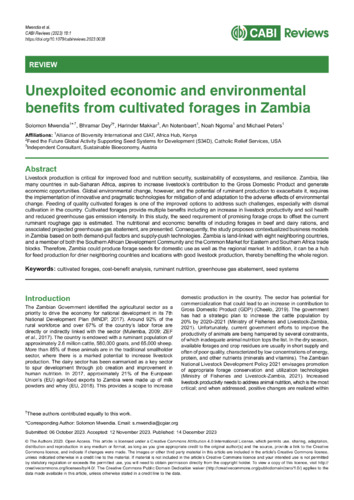Unexploited economic and environmental benefits from cultivated forages in Zambia
Abstract Livestock production is critical for improved food and nutrition security, sustainability of ecosystems, and resilience. Zambia, like many countries in sub-Saharan Africa, aspires to increase livestock’s contribution to the Gross Domestic Product and generate economic opportunities. Global environmental change, however, and the potential of ruminant production to exacerbate it, requires the implementation of innovative and pragmatic technologies for mitigation of and adaptation to the adverse effects of environmental change. Feeding of quality cultivated forages is one of the improved options to address such challenges, especially with dismal cultivation in the country. Cultivated forages provide multiple benefits including an increase in livestock productivity and soil health and reduced greenhouse gas emission intensity. In this study, the seed requirement of promising forage crops to offset the current ruminant roughage gap is estimated. The nutritional and economic benefits of including forages in beef and dairy rations, and associated projected greenhouse gas abatement, are presented. Consequently, the study proposes contextualized business models in Zambia based on both demand-pull factors and supply-push technologies. Zambia is land-linked with eight neighboring countries, and a member of both the Southern African Development Community and the Common Market for Eastern and Southern Africa trade blocks. Therefore, Zambia could produce forage seeds for domestic use as well as the regional market. In addition, it can be a hub for feed production for drier neighboring countries and locations with good livestock production, thereby benefiting the whole region.

